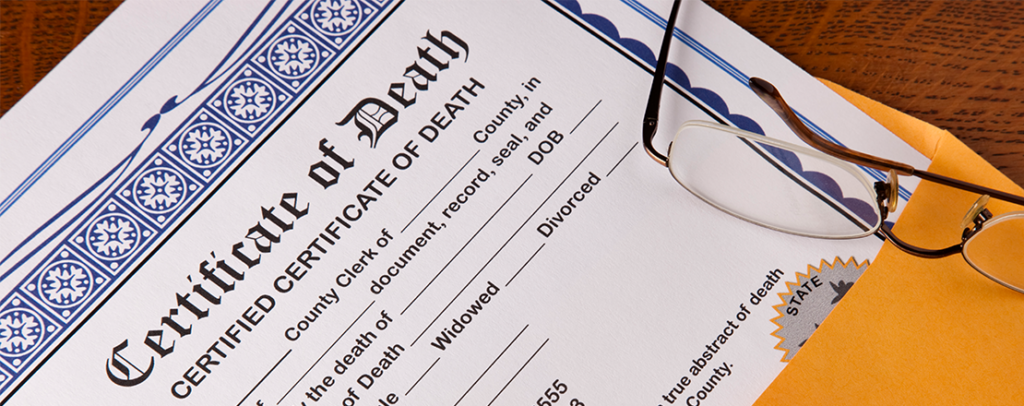At Family Wise, death certificates are a document we are well acquainted with: it being a vital resource when researching family histories for our customers; and also part of the process when heir tracing contemporaneous deaths. That’s not to say they don’t weigh heavily, especially when they relate to recent deaths.
But for many people, thankfully, they are a far rarer document to see. This means that if you need to complete one for a loved one, you may not know where to start. Or if you are researching your own family history, you may struggle to see the key clues.
Always happy to help, here is the first of two brief guides on death certificates: What to do if you need to register a death.
Look out for PART TWO when we will explore how you can use a death certificate when conducting family research.

How to Complete a Death Certificate
If you find yourself next of kin to someone who has just died, or at least the closest person to them, you may be awash with emotion. Whether they were a spouse, parent, child, or good friend it will be one of the most challenging times for you. Even if it was a neighbour who you weren’t especially close to, but you were closer than anyone else, it may be a profound moment.
Amidst the turmoil, it could fall upon you to register the death and obtain a death certificate, It’s not an everyday occurrence, so what do you do?
Check You Can Register the Death
Only certain people can register a death, so first of all check you are eligible to do so. You must be:
- A relative
- A person who was present at the death
- The occupier of the house or an official from a public building where the death occurred, such as a hospital
- A person who is making arrangements with the funeral director.
If you can register the death, you are officially known as the informant during the process.
Where Do You Register the Death and Is There a Deadline?
Deaths are registered by the registrar for the district in which the person died. Most registrars work on an appointment system, so you will need to book in advance. In England, Wales, and Northern Ireland, you have five days in which to register the death. In Scotland, it is eight days.
If the coroner (or procurator fiscal) is involved, say if the death in unexplained, then these timeframe may be extended.

What Do You Need to Register a Death?
The most important item the registrar will need from you when registering a death is the medical certificate confirming the cause of death. Sometimes this may have been sent directly to them by the deceased’s GP, the coroner, or another medical professional.
If the person dies at home, a healthcare professional will need to confirm that they have died. They’ll complete a medical certificate of cause of death if the death was expected and they’re sure it was from natural causes. They’ll also give you a notice to informant attached to the medical certificate of cause of death. This tells you how to register the death.
When registering the death you will be given a form often known as the green certificate or form, this gives permission for the body to be buried or for an application for cremation to be made, and you should give this to the funeral director.
It is important this is completed correctly by the medical professional, otherwise it can cause some unwelcome toing and froing for you, to get it properly amended, and it costs.
The death certificate itself will include:
- Place and time of death
- Full name (including maiden name where relevant)
- Sex
- Marital status
- Date and place of birth
- Occupation
- Usual address
- Your details as the informant (including your qualification to be the informant, as outlined above)
- The medically certified cause of death
To aid answering all these questions, it is best to come prepared wherever possible. This means bringing supporting documentation like a birth certificate, proof of address, driving licence/passport, if these are accessible to you.
We often see death certificates with incorrect information, for example, a solicitor providing details of the wrong care home, or someone close to the deceased being uncertain as to the age or date of birth of the individual. It costs a small fee to amend a death certificate so it’s important to double check your information so you include all the correct details.
Support From Family Wise
A death of someone close is always difficult, but it can be further complicated where they die intestate (without leaving a will) or if some of the beneficiaries in a will cannot be traced. At Family Wise, we specialise in providing a tracing service for such people. If you would like help locating beneficiaries following a death, please do not hesitate to get in touch to find out how we can help you.

